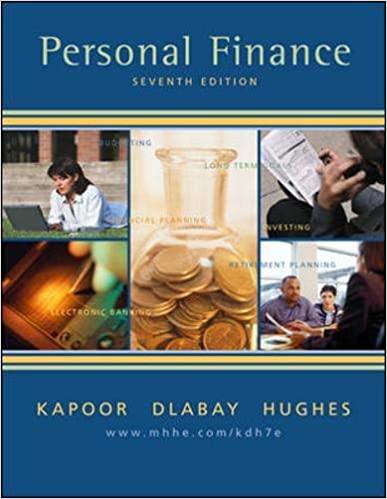
You find a certain stock that had returns of 14.2 percent, -22.1 percent, 28.1 percent, and 19.1 percent for four of the last five years. Assume the average return of the stock over this period was 12.2 percent. What was the stock's return for the missing year? (Do not round intermediate calculations and enter your answer as a percent rounded to 2 decimal places, e.g., 32.16.) Stock's return What is the standard deviation of the stock's returns? (Do not round intermediate calculations and enter your answer as a percent rounded to 2 decimal places, e.g., 32.16.) Standard deviation Assume the returns from holding small-company stocks are normally distributed. Also assume the average annual return for holding the small-company stocks for a period of time was 16.4 percent and the standard deviation of those stocks for the period was 34.1 percent. Use the NORMDIST function in Excel to answer the following questions. What is the approximate probabillity that your money will double in value in a single year? (Do not round intermediate calculations and enter your answer as a percent rounded to 3 decimal places, e.g., 32.161.) Probability What is the approximate probability that your money will triple in value in a single year? (Do not round intermediate calculations and enter your answer as a percent rounded to 8 decimal places, 0.g 32.16161616.) Probability Consider the following table for a seven-year period: Returns Year 3.90% 3.75 4.65 5.07 2.87 1.75 1.48 1.24% 2.38 70 -9.44 -6.52 1.39 What was the average real retun for Treasury bills for this time period? (Do not round intermediate calculations and enter your answer as a percent rounded to 2 decimal places, e.g., 32.16.) Average real return You find a certain stock that had returns of 14.2 percent, -22.1 percent, 28.1 percent, and 19.1 percent for four of the last five years. Assume the average return of the stock over this period was 12.2 percent. What was the stock's return for the missing year? (Do not round intermediate calculations and enter your answer as a percent rounded to 2 decimal places, e.g., 32.16.) Stock's return What is the standard deviation of the stock's returns? (Do not round intermediate calculations and enter your answer as a percent rounded to 2 decimal places, e.g., 32.16.) Standard deviation Assume the returns from holding small-company stocks are normally distributed. Also assume the average annual return for holding the small-company stocks for a period of time was 16.4 percent and the standard deviation of those stocks for the period was 34.1 percent. Use the NORMDIST function in Excel to answer the following questions. What is the approximate probabillity that your money will double in value in a single year? (Do not round intermediate calculations and enter your answer as a percent rounded to 3 decimal places, e.g., 32.161.) Probability What is the approximate probability that your money will triple in value in a single year? (Do not round intermediate calculations and enter your answer as a percent rounded to 8 decimal places, 0.g 32.16161616.) Probability Consider the following table for a seven-year period: Returns Year 3.90% 3.75 4.65 5.07 2.87 1.75 1.48 1.24% 2.38 70 -9.44 -6.52 1.39 What was the average real retun for Treasury bills for this time period? (Do not round intermediate calculations and enter your answer as a percent rounded to 2 decimal places, e.g., 32.16.) Average real return







